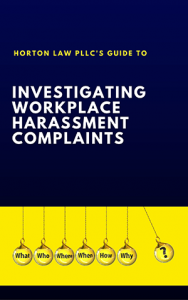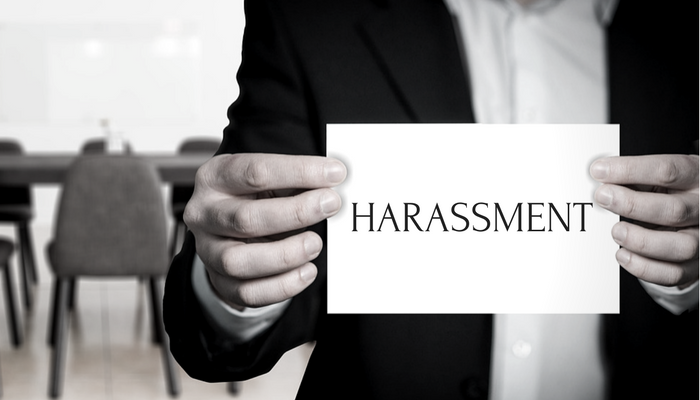
Most employers do or should have zero tolerance policies regarding workplace harassment. These policies don’t exist just for legal reasons. Harassment is bad in itself, plus it interferes with productivity. But not all harassing behavior violates employment discrimination laws.
First, let’s define harassment. Then, we’ll discuss when harassment becomes legally actionable.
[Click here to get my FREE step-by-step Guide to Investigating Workplace Harassment Complaints!]
What Is Harassment?
Under state and federal employment discrimination laws, harassment is unwelcome conduct based on a protected category.
These laws collectively protect many characteristics.
At the federal level: Title VII protects race, color, sex, religion, and national origin. The Americans with Disabilities Act protects qualified individuals with disabilities. The Age Discrimination in Employment Act protects age, for workers 40 or older. The Genetic Information Nondiscrimination Act protects genetic information, which includes a broad range of information about family medical history.
State laws often protect these same categories, plus others. Some states protect sexual orientation, marital status, familial status, etc. Michigan law even protects workers from harassment because of height and weight.
These laws also usually protect against harassment based on an individual having complained of discrimination. In other words, they prohibit retaliation.
However, one or two isolated comments, even if unwelcome, may not violate these laws.
Unlawful Workplace Harassment
Harassment becomes unlawful where:
- enduring the offensive conduct becomes a condition of continued employment, or
- the conduct is severe or pervasive enough to create a work environment that a reasonable person would consider intimidating, hostile, or abusive.
The “reasonable person” standard means that it’s not enough that the specific employee involved feels this way. If most similarly situated people would not be offended, then the conduct wouldn’t rise to the level of being unlawful. Again, that doesn’t mean it is acceptable in the workplace.
Forms of Harassment
Harassment can come in numerous forms, including:
- offensive jokes,
- slurs,
- epithets or name calling,
- physical assaults or threats,
- intimidation, ridicule or mockery,
- insults or put-downs,
- offensive objects or pictures, and
- interference with work performance.
Note that the anti-discrimination laws protect employees from workplace harassment not only by co-workers and supervisors, but also by third parties. Thus, employers must prevent and remedy inappropriate conduct by vendors, customers, visitors, contractors, etc., against their employees. If employers permit harassment by outsiders to persist to the point of unlawful harassment, then the employer may be legally responsible.
How To Avoid Unlawful Harassment?
The best way to avoid unlawful harassment is to prevent harassment altogether. This is why employers should have anti-harassment policies that go beyond just what the law prohibits. It’s not a good idea to permit behavior that even comes close to the line.
In addition to a well-written and carefully followed policy, employers should also train employees about harassment. Many employers include anti-harassment training in their on-boarding process. But it is a good idea to also provide periodic group training to all employees. Several states require private employers to do so.
Finally, employers must respond promptly to all complaints of workplace harassment. Investigating thoroughly and taking appropriate action will hopefully avoid escalation. If not, the employer’s good faith attempt to keep the workplace free of harassment may still help avoid liability.
For more, read: Responding to Employment Discrimination Complaints and download my Guide to Investigating Workplace Harassment Complaints.

You must be logged in to post a comment.